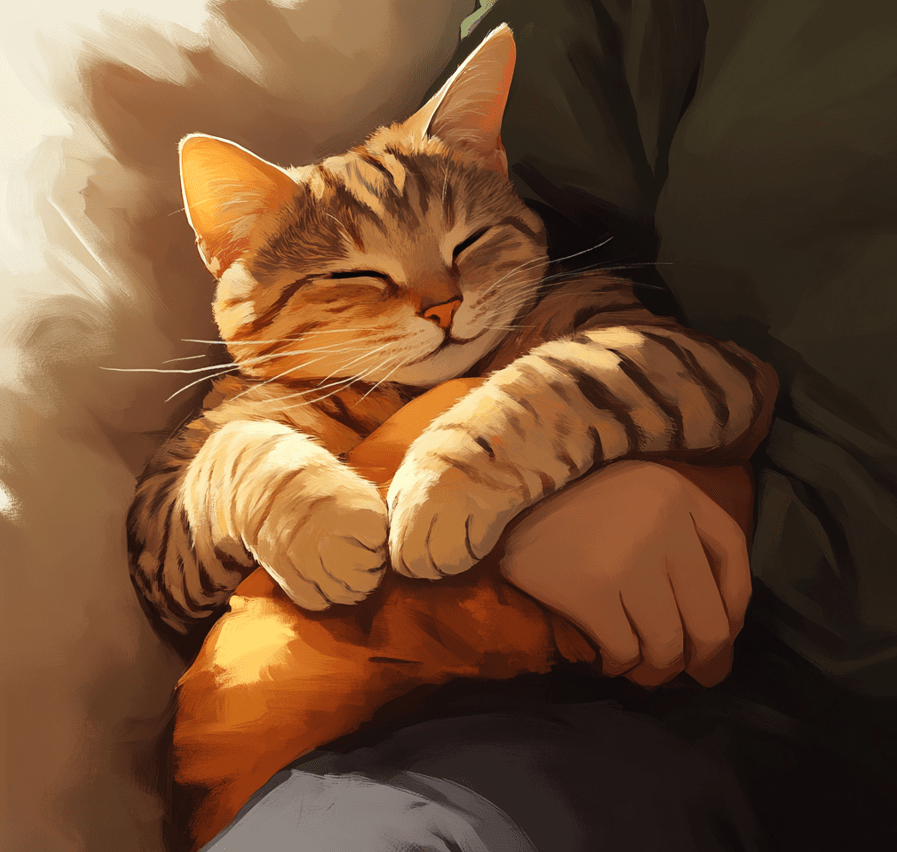
Territorial behavior in Domestic Shorthairs is a common issue that many cat owners face. These beloved pets, known for their playful and affectionate nature, can sometimes exhibit behaviors like spraying, scratching, or aggression when they feel their space is threatened. Understanding and managing territorial behavior in Domestic Shorthairs requires patience, knowledge, and the right strategies. This comprehensive guide will explore the causes of territorial behavior, practical solutions, and expert tips to create a harmonious environment for both you and your feline friend.
What Is Territorial Behavior in Domestic Shorthairs?
Domestic Shorthairs are one of the most popular cat breeds due to their adaptability and diverse personalities. However, like all cats, they have a natural instinct to claim and defend their territory. Territorial behavior in Domestic Shorthairs manifests in various ways, including:
Spraying or marking: Cats may urinate outside the litter box to mark their territory.
Scratching furniture: This is a way to leave visual and scent markers.
Aggression toward other pets or people: Hissing, swatting, or chasing other animals or humans entering their space.
Vocalizations: Excessive yowling or growling to assert dominance.
These behaviors stem from a cat’s evolutionary instincts to protect resources like food, shelter, and mates. While Domestic Shorthairs are generally friendly, certain triggers can heighten their territorial instincts.
Why Do Domestic Shorthairs Exhibit Territorial Behavior?
To effectively manage territorial behavior, it’s essential to understand its root causes. Several factors contribute to this behavior in Domestic Shorthairs:

1. Instinctual Drives
Cats are naturally territorial animals. In the wild, they establish boundaries to secure resources. Domestic Shorthairs retain these instincts, even in a home environment where resources are plentiful.
2. Environmental Changes
Changes in a cat’s environment, such as moving to a new home, rearranging furniture, or introducing new pets, can trigger territorial behavior. Domestic Shorthairs may feel their space is being invaded, prompting defensive actions.
3. Presence of Other Animals
The arrival of a new pet, whether a cat, dog, or another animal, can spark territorial disputes. Domestic Shorthairs may perceive the newcomer as a threat to their domain.
4. Hormonal Influences
Unneutered or unspayed Domestic Shorthairs are more likely to exhibit territorial behaviors like spraying or aggression. Hormones drive the urge to mark territory and compete for mates.
5. Stress or Anxiety
Stressful situations, such as loud noises, unfamiliar visitors, or changes in routine, can make Domestic Shorthairs feel insecure, leading to territorial displays.
6. Lack of Stimulation
Boredom or insufficient mental and physical stimulation can cause Domestic Shorthairs to channel their energy into territorial behaviors like scratching or marking.
Recognizing Territorial Behavior in Domestic Shorthairs
Before addressing territorial behavior, you need to identify it accurately. Here are common signs to watch for:
Urine Marking: Spraying on walls, furniture, or other vertical surfaces.
Scratching Specific Areas: Repeated scratching of furniture, doorframes, or carpets.
Aggressive Posturing: Hissing, swatting, or chasing other pets or people.
Guarding Resources: Blocking access to food bowls, litter boxes, or favorite spots.
Excessive Vocalization: Yowling or growling, especially when another animal approaches.
If your Domestic Shorthair displays these behaviors, it’s time to take action to address the underlying causes and restore peace in your home.
How to Manage Territorial Behavior in Domestic Shorthairs
Handling territorial behavior in Domestic Shorthairs requires a combination of environmental adjustments, behavioral training, and sometimes professional intervention. Below are proven strategies to help you manage and reduce these behaviors.

1. Spay or Neuter Your Cat
One of the most effective ways to curb territorial behavior is to spay or neuter your Domestic Shorthair. This reduces hormone-driven behaviors like spraying and aggression. According to the American Veterinary Medical Association, spaying or neutering can decrease marking behaviors by up to 90% in cats.
When to Spay/Neuter: Ideally, have your cat spayed or neutered before they reach sexual maturity (around 6 months of age).
Benefits: In addition to reducing territorial behavior, spaying/neutering lowers the risk of certain health issues and prevents unwanted litters.
2. Create a Safe and Enriched Environment
A stimulating environment can reduce stress and territorial behavior in Domestic Shorthairs. Cats need spaces where they feel secure and engaged.
Provide Vertical Spaces: Install cat trees, shelves, or perches to give your cat a sense of control over their territory. Vertical spaces allow Domestic Shorthairs to observe their environment from a safe height.
Offer Hiding Spots: Cardboard boxes, cat tunnels, or cozy beds provide safe retreats where your cat can relax.
Interactive Toys: Puzzle feeders, laser pointers, and feather wands keep your Domestic Shorthair mentally and physically stimulated.
Scratching Posts: Place multiple scratching posts around your home to redirect scratching behavior from furniture.
3. Manage Multi-Pet Households
If you have multiple pets, territorial conflicts may arise. Here’s how to create harmony:
Gradual Introductions: Introduce new pets slowly, allowing your Domestic Shorthair to adjust. Start with scent swapping (exchanging bedding) before face-to-face meetings.
Separate Resources: Provide individual food bowls, water dishes, and litter boxes for each pet to prevent competition.
Supervised Interactions: Monitor interactions between pets until they’re comfortable with each other.
Feliway Diffusers: Use pheromone diffusers like Feliway to reduce stress and promote a sense of calm in multi-cat households.
4. Clean Up Scent Markers
Cats rely heavily on scent to define their territory. If your Domestic Shorthair is spraying or marking, clean the affected areas thoroughly to remove their scent.
Use Enzymatic Cleaners: Products like Nature’s Miracle or PetSafe’s enzymatic cleaners break down urine odors, discouraging repeat marking.
Avoid Ammonia-Based Cleaners: Ammonia smells like urine to cats and may encourage marking.
Block Access: Temporarily block access to marked areas to break the habit.
5. Maintain a Consistent Routine
Domestic Shorthairs thrive on routine. Sudden changes can trigger territorial behavior due to stress. To keep your cat calm:
1.Feed your cat at the same times each day.
2.Clean the litter box daily to ensure it’s a welcoming space.
3.Spend quality time playing and bonding with your cat daily.
6. Address Stress and Anxiety
Stress is a major driver of territorial behavior. Identify and minimize stressors in your Domestic Shorthair’s environment.
Minimize Loud Noises: Keep your cat away from loud appliances or noisy gatherings.
Provide Quiet Spaces: Ensure your cat has access to quiet areas where they can retreat.
Consult a Veterinarian: If stress persists, your vet may recommend calming supplements or medications.
7. Use Positive Reinforcement
Reward your Domestic Shorthair for good behavior to reinforce positive habits.
Treats and Praise: Offer treats or verbal praise when your cat uses the scratching post or litter box appropriately.
Avoid Punishment: Yelling or punishing your cat can increase stress and worsen territorial behavior.
8. Consult a Professional
If territorial behavior persists despite your efforts, seek help from a professional:
Veterinarian: Rule out medical issues like urinary tract infections that may cause spraying or litter box avoidance.
Cat Behaviorist: A certified feline behaviorist can assess your cat’s environment and behavior to develop a tailored plan.
Board-Certified Veterinary Behaviorist: For severe cases, a veterinary behaviorist can prescribe medications or advanced therapies.
Preventing Territorial Behavior in Domestic Shorthairs
Prevention is always better than cure. Here are proactive steps to minimize territorial behavior in Domestic Shorthairs:
Early Socialization: Expose your kitten to various people, pets, and environments during their critical socialization period (2–7 weeks of age).
Spay/Neuter Early: As mentioned, spaying or neutering before sexual maturity reduces territorial instincts.
Provide Ample Resources: Ensure your home has enough litter boxes (one per cat plus one extra), food bowls, and resting spots to prevent competition.
Regular Vet Checkups: Routine veterinary visits can catch health issues that may contribute to behavioral changes.
Common Myths About Territorial Behavior in Domestic Shorthairs
There are several misconceptions about territorial behavior in cats. Let’s debunk a few:
Myth 1: Only Male Cats SprayWhile male Domestic Shorthairs are more likely to spray, females can also mark territory, especially if unspayed or stressed.
Myth 2: Territorial Behavior Means Your Cat Is “Bad”Territorial behavior is a natural instinct, not a sign of a “bad” cat. With proper management, most cats can learn to coexist peacefully.
Myth 3: You Can’t Change Territorial BehaviorWith patience and the right strategies, territorial behavior can be significantly reduced or eliminated.
Conclusion

Territorial behavior in Domestic Shorthairs is a natural instinct, but it doesn’t have to disrupt your household. By understanding the causes—such as stress, hormonal influences, or environmental changes—you can take proactive steps to manage and prevent these behaviors. Spaying or neutering, creating a stimulating environment, and using positive reinforcement are just a few ways to help your Domestic Shorthair feel secure and content.
With patience and consistency, you can transform your home into a peaceful space where your cat thrives. If challenges persist, don’t hesitate to consult a veterinarian or feline behaviorist for personalized guidance. By addressing territorial behavior thoughtfully, you’ll strengthen the bond with your Domestic Shorthair and ensure a happy, harmonious life together.




